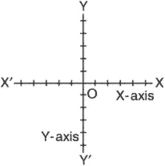Distance was measured on the
Y-axis so that the distance created at the distance X +67.4 mm and points where they cross the cut at Z +10, 25, 40 mm, were created.
During the experiments, container was lifted up to 1.52 m height (by Z-axis), transported by
Y-axis 1.61 m distance and finally lowered down to 0.58 m height (by Z-axis).
* Apply step 3 to a suitable set of the original
y-axis values and add the new
y-axis values as a second column of
y-axis values to the left of the original
y-axis values.
In previous studies, the calibers of the transverse and sigmoid sinuses were slightly larger on the right side than left side.[sup][15],[16] The nature of the sinuses may be why the IMTS was located more closely to the
Y-axis on the right side.[sup][9] In the present study, however, the ASTS was closer to the
Y-axis on the left side than the right side.
Before the experiment, the double closed-loop PID parameters are adjusted to the best in the ACS control software, where the position gain [K.sub.PP] is 200 for the v-axis and 250 for the
y-axis in position loop controller while in speed loop controller, the velocity gain [K.sub.VP] and the integrator gain [K.sub.VI] are 35 and 400 for the x-axis and 50 and 250 for the
y-axis, respectively.
Together these features enable the new machines to achieve more than 1.5 times higher rigidity - both static and dynamic - compared with earlier machines, and to realize enhanced heavy-cutting capacity at a high position in the
Y-axis, which effectively improves productivity.
That configuration includes a
y-axis cross rail of 9 meters and an adjustable w-axis that adds up to 5 meters of vertical travel to complement the 2.5 meters of the z-axis ram.
The extension axis of the positive birefringence is taken to be the X-axis (machine direction) and that of negative birefringence was the
Y-axis (transverse direction).
On page 1, the first sentence of the "Results" section should read, "For the 2006 surveillance year, 2,757 (0.9%) of 308,038 children aged 8 years residing in the 11 ADDM sites were identified as having an ASD, indicating an overall average prevalence of 9.0 per 1,000 population (95% confidence interval [CI] = 8.6-9.3)." On page 2, the first sentence of the third paragraph should read, "Before the 1980s, the term "autism" was used primarily to refer to autistic disorder and was thought to be rare, affecting approximately one in every 2,000 (0.05%) children (2,3)." On page 13, the
y-axis for Figure 4 should be labeled "Prevalence."

